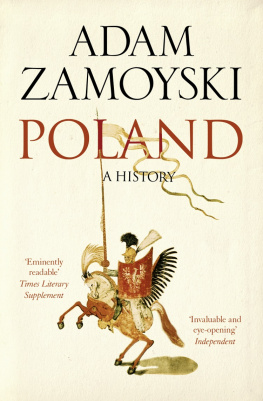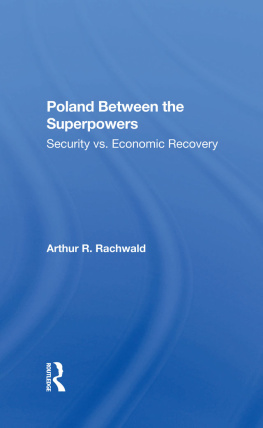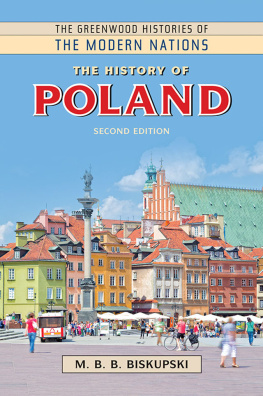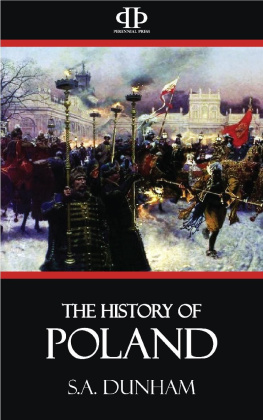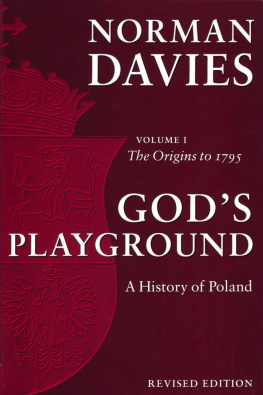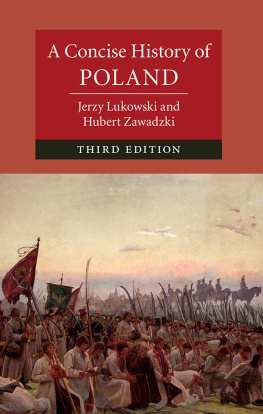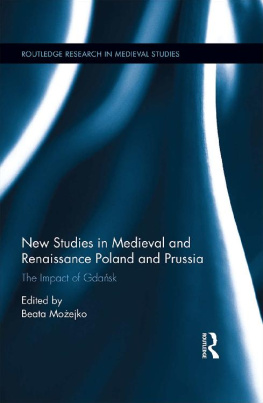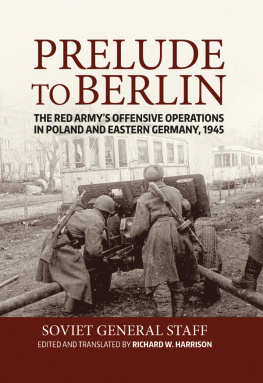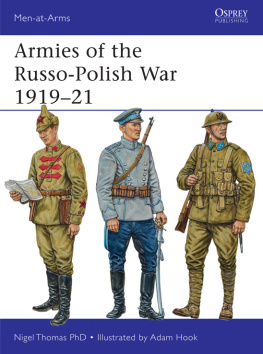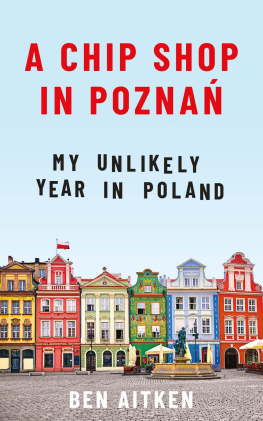| Central Europe at the Beginning of the Tenth Century | 2 |
| The Kingdom of Bolesaw the Brave in 1025 | 7 |
| The Division of Poland, 1138 | 13 |
| The Polish Duchies, c.1250 | 22 |
| The Kingdom of Wadysaw the Short, c.1320 | 29 |
| Poland under Kazimierz the Great, 1370 | 33 |
| The Combined Kingdom of Poland and Lithuania in 1466 | 36 |
| The Jagiellon Dominions at the End of the Fifteenth Century | 49 |
| The Religious Debate of the Sixteenth Century | 59 |
| The Polish Commonwealth of 1569 | 81 |
| The Commonwealth in the Mid-Seventeenth Century | 137 |
| The Commonwealth in Decline | 150 |
| The First Partition of Poland, 1772 | 195 |
| The Three Partitions of Poland | 212 |
| Napoleonic Europe, 1809 | 223 |
| The Congress Kingdom, 1815-31 | 227 |
| The Lands of Partitioned Poland, c.1860 | 259 |
| The Polish Republic | 295 |
| The Nazi-Soviet Partition of Poland, 1939 | 317 |
| The Peoples Republic of Poland | 337 |
| Modern Europe | 383 |
| The early Piast kings | 10 |
| The division and reunification of Poland under the later Piasts | 24-25 |
| The Jagiellon dynasty of Poland-Lithuania | 41 |
| The Vasa kings of Poland | 116 |
Polish words may look complicated, but pronunciation is at least consistent. All vowels are simple and of even length, as in Italian, and their sound is best rendered by the English words sum (a), ten (e), ease (i), lot (o), book (u), sit (y).
Most of the consonants behave in the same way as in English, except for c, which is pronounced ts; j, which is soft, as in yes; and w, which is equivalent to English v. As in German, some consonants are softened when they fall at the end of a word, and b, d, g, w, z become p, t, k, f, s, respectively.
There are also a number of accented letters and combinations peculiar to Polish, of which the following is a rough list:
= u, hence Krakw is pronounced krakooff .
= nasal a, hence sd is pronounced sont.
= nasal e, hence czyca is pronounced wenchytsa.
= ch as in cheese.
cz = ch as in catch.
ch = guttural h as in loch.
= English w, hence Bolesaw becomes Boleswaf, dz Wootj.
= soft n as in Spanish maana.
rz = French j as in je.
= sh as in sheer.
sz = sh as in bush.
?? = as rz (?? is the accented capital).
= A similar sound, but sharper as in French gigot.
The stress in Polish is consistent, and always falls on the penultimate syllable.
The idea that a historian should radically alter his view of the past over the space of a couple of decades is, on the face of it, preposterous. But when I reread my history of Poland, The Polish Way, first published in 1987, which I meant to revise and update for a new edition, I became convinced of the contrary. History did not, as some have argued, come to an end in the intervening two decades, but they have completely changed the perspective.
When I sat down to write that book, few people in western Europe, let alone further afield, had any idea of where Poland lay, and fewer still had any sense of its having a past worth dwelling on. Given that history is made up of an intricate interaction of land, people and culture, Poland presented unique problems. How was the historian to approach a country whose territory had expanded and contracted, shifted and vanished so dramatically, which currently existed as an almost random compromise resulting from the Second World War, and which lay within the imperial frontiers of another power? How was he to treat a people which, from ethnic, cultural and religious diversity had been purged by genocide and ethnic cleansing into a homogeneous society? How to represent a culture which had been largely obliterated, whose remains survived only underground or in exile?
Matters were made no easier by the fact that the entire geopolitical space in which Poland existed was also in an unnatural state of suspension, with Germany divided, Russia a bureaucratic totalitarian monstrosity, and the areas inhabited by the Lithuanians, Belorussians and Ukrainians a kind of limbo.
Although the election of a Pole, Karol Wojtya, to the Holy See as Pope John Paul II, the dramatic rise of Solidarno and a number of books and articles published in the West, along with increased travel, had recently brought Poland into the consciousness of greater numbers of people, it was not until the collapse of the Soviet project in 1989 that the situation began to alter significantly. It was only then that Poland and the other countries of the region came back to life as political entities. And that fundamentally altered the way in which they are perceived.
The concurrent process of globalisation and the huge shifts in economic and military power taking place around the world have also made it easier for the historian to represent a foreign country to his readers. The fact that what were then viewed as developing countries (with all the condescension that term implied) are now emerging as the major players of the future has radically altered attitudes in the hitherto dominant nations of the West. Put simply, the historian has less to explain and fewer prejudices to break down. But the real significance of the events of 1989 only began to make itself felt later.
When I was writing my book, Europe was divided by the Iron Curtain. Crossing it was an awesome and bizarre experience for anyone brought up in the Westthe coils of barbed wire, the watchtowers, the machine guns aimed at the traveller and the ubiquitous guards with their Alsatian dogs were richly redolent of Nazi concentration camp and Soviet gulag. Not surprisingly, since this absurd barrier was one of the last surviving vestiges of a long historical process that had reached its apogee in the twin abominations of Soviet communism and German fascism.
Only two hundred years before, the whole area between the Rhine and the Dnieper had been inhabited by a variety of peoples with wildly differing cultural, religious and political affiliations, organised into an equally variegated miscellany of empires, commonwealths, kingdoms, duchies, principalities, republics, bishoprics, city states, baronies and lesser sovereignties. In a process that began with the eighteenth-century partitions of Poland, these polities had been subjugated and then reorganised into a small number of highly competitive states and the peoples inhabiting them into largely fictitious nations which saw their survival in Darwinian terms. This initiated a struggle that culminated in the two world wars and the Cold War.
If the Iron Curtain disfigured Europe physically, the process which had led up to it had distorted history even more fundamentally. No history more so than that of Poland, which was the first and greatest casualty of the process. Two years after Russia, Prussia and Austria had divided the country up among themselves, on 26 January 1797 they signed a convention containing a secret article which stressed the absolute necessity of abolishing everything which might recall the existence of a Polish kingdom in face of the performed annihilation of this political body. In this spirit, the Prussians melted down the Polish crown jewels, the Austrians turned royal palaces into barracks, and the Russians grabbed everything they could lay their hands on and shipped it out, particularly documents. All three rewrote history to give the impression that Poland had never been a fully sovereign state, only a backwater which needed civilising.

